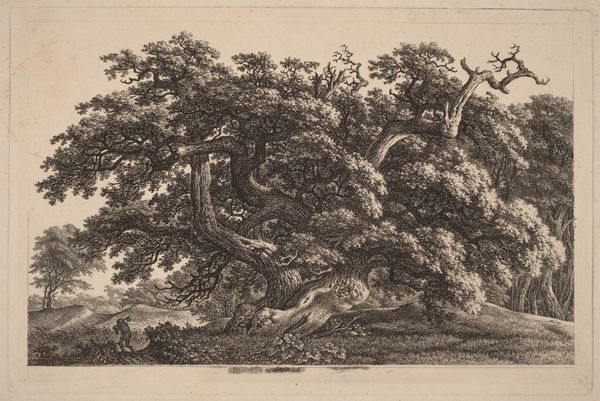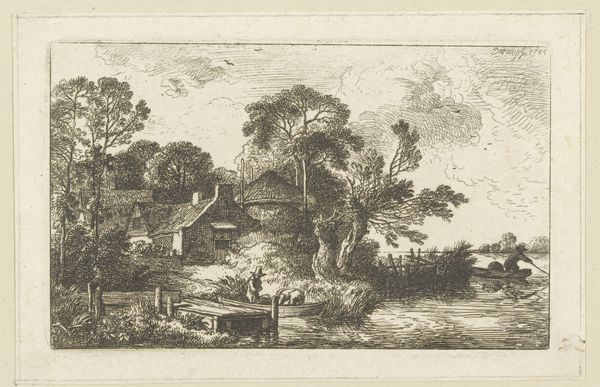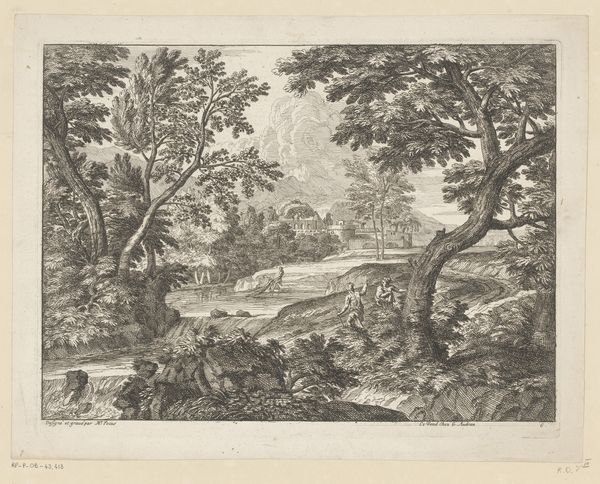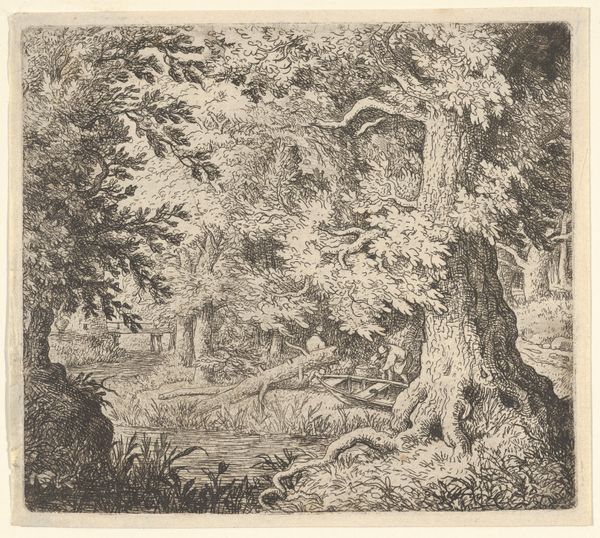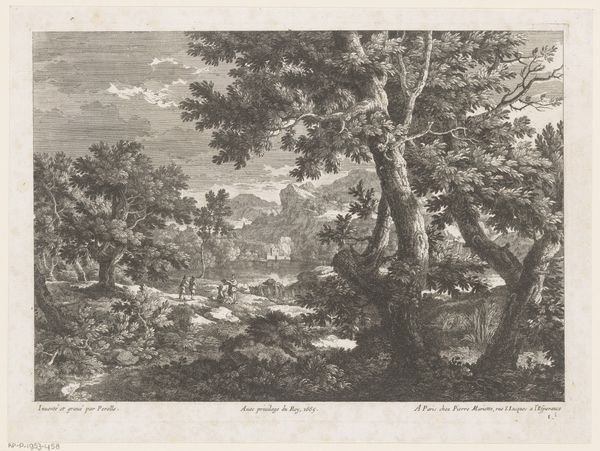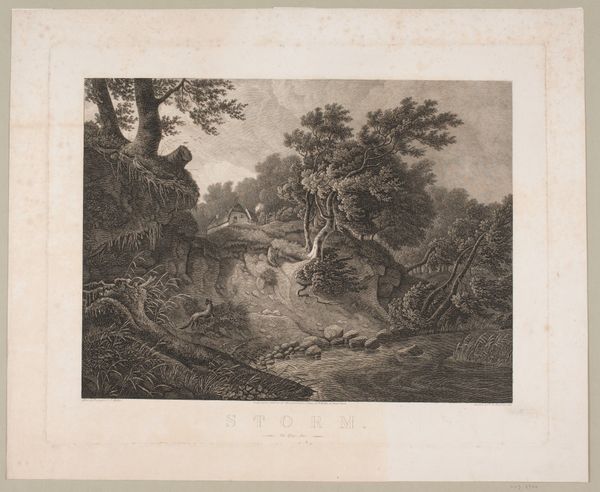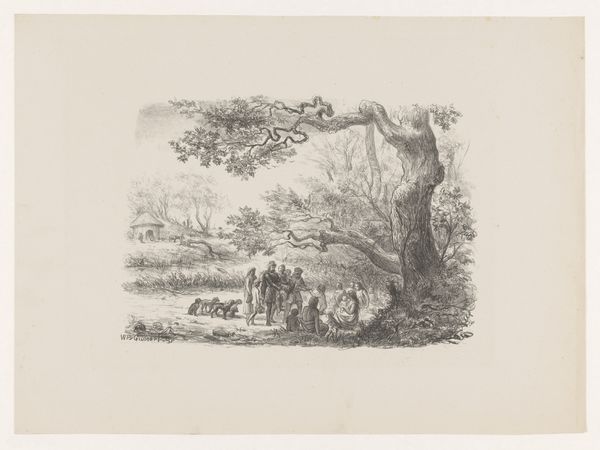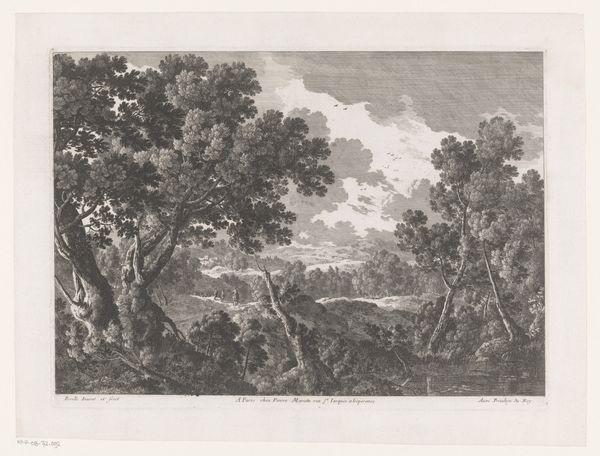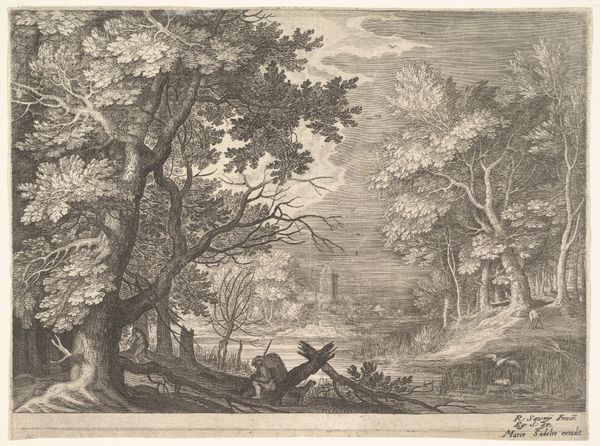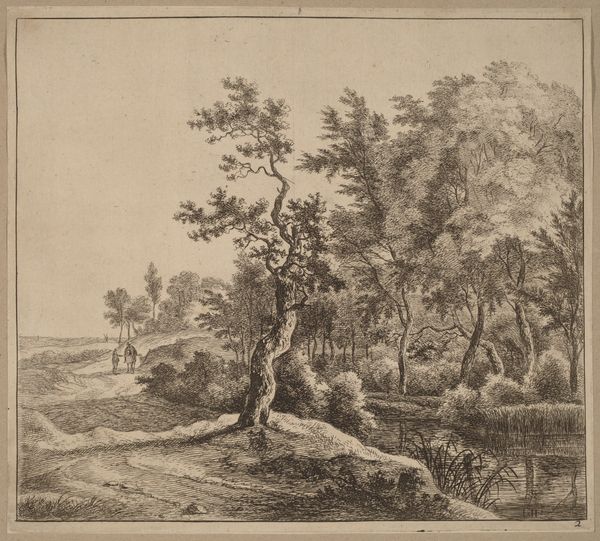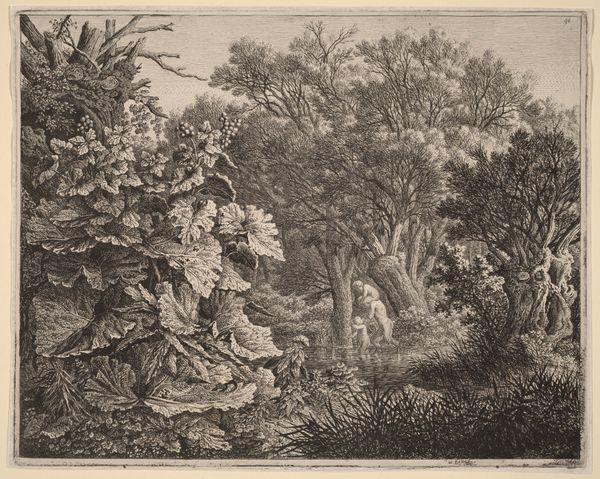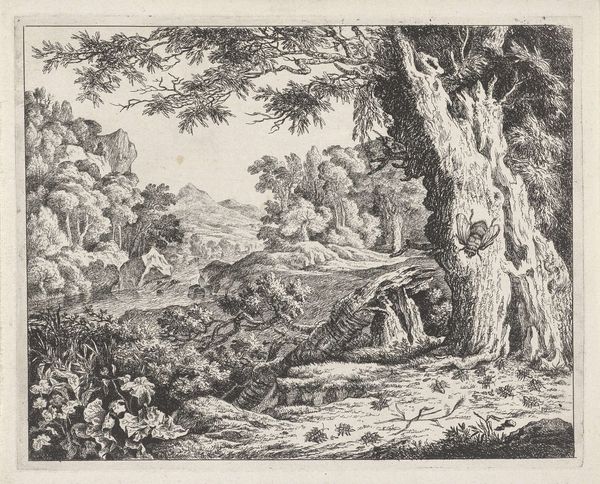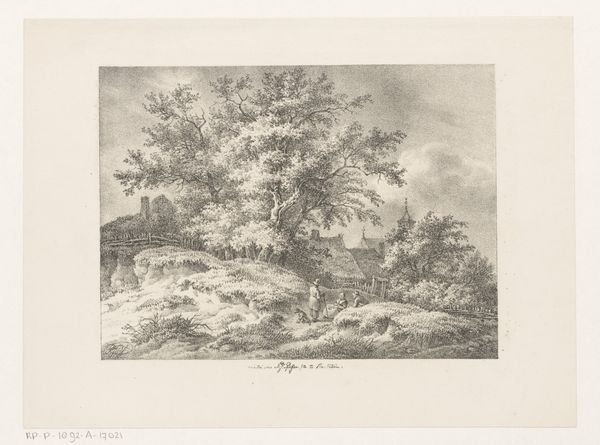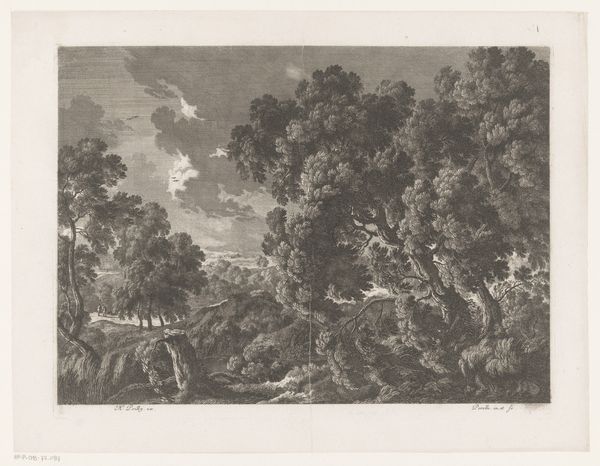
drawing, print, etching
#
drawing
# print
#
etching
#
landscape
#
pencil drawing
#
romanticism
Dimensions: Image: 5 1/16 × 7 13/16 in. (12.9 × 19.9 cm) Plate: 6 1/16 × 8 11/16 in. (15.4 × 22 cm) Sheet: 11 5/16 × 13 9/16 in. (28.7 × 34.4 cm)
Copyright: Public Domain
Charles-François Daubigny created this etching, La Tonnelle, capturing a serene view of 19th-century rural France. Daubigny was deeply immersed in the Barbizon School, a group of artists who turned away from academic painting to embrace direct observation of nature. Notice how the gnarled tree dominates the foreground, its roots exposed. In the background, figures gather under a tonnelle, or garden arbor, hinting at communal life. Daubigny, unlike some of his contemporaries, sought to represent the landscape as it was, without idealizing it. His focus on the everyday lives of the rural population marks a shift towards realism. What does it mean to represent the working classes in art? Does this piece maintain traditional representations, or does it attempt to develop alternative narratives around nature and community? Consider how Daubigny's work reflects a broader cultural interest in the lives of those often overlooked by the dominant narratives of the time. Ultimately, this image invites us to reflect on our relationship to the natural world and the communities we build within it.
Comments
No comments
Be the first to comment and join the conversation on the ultimate creative platform.
